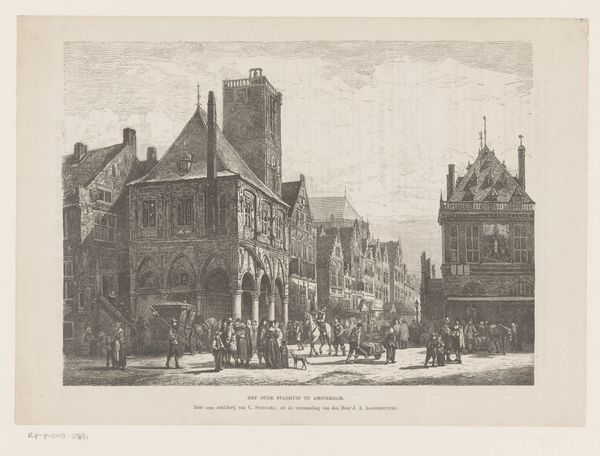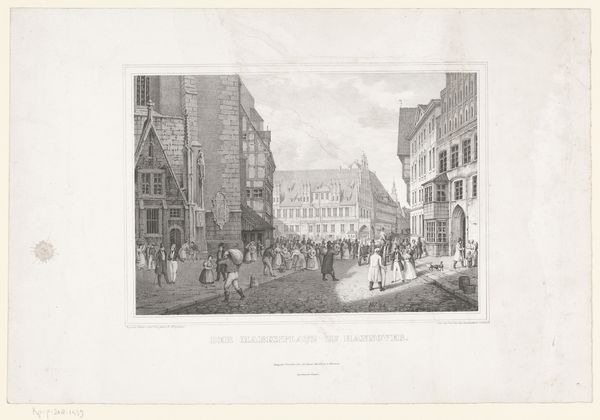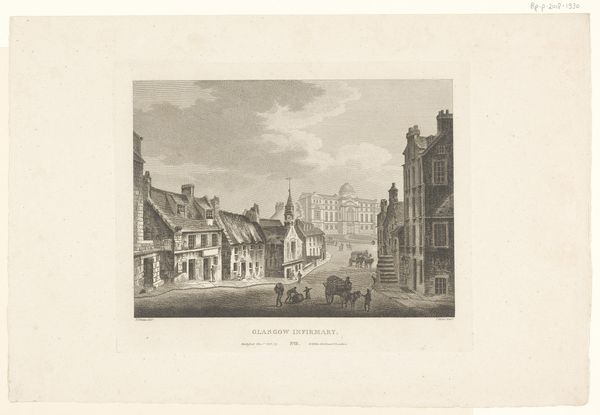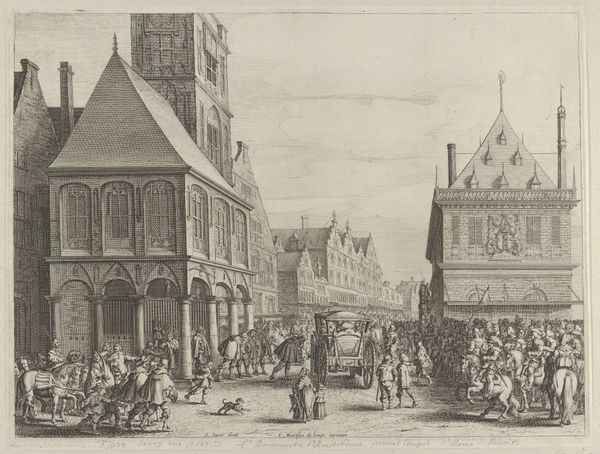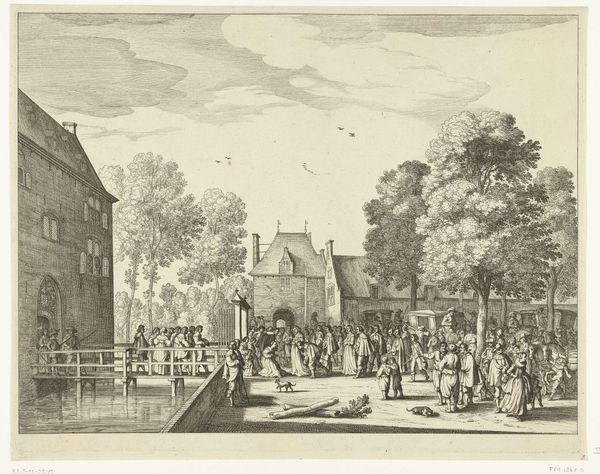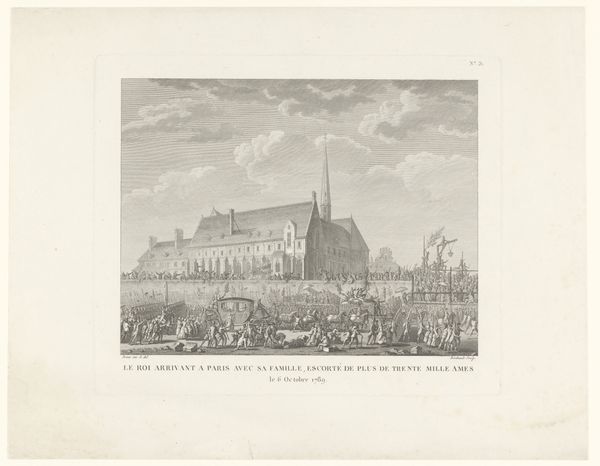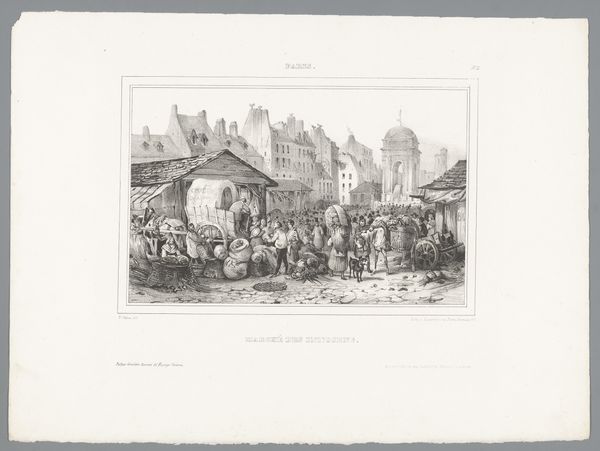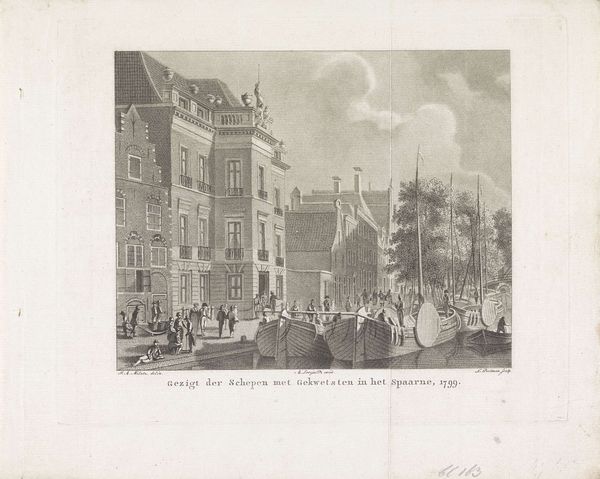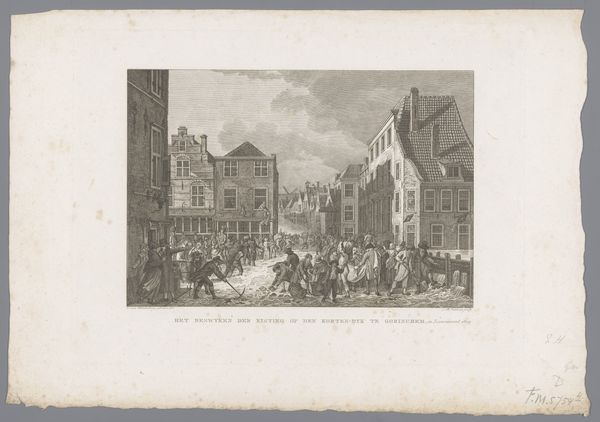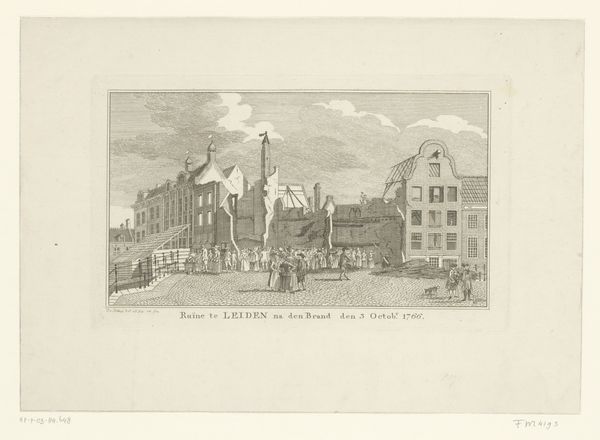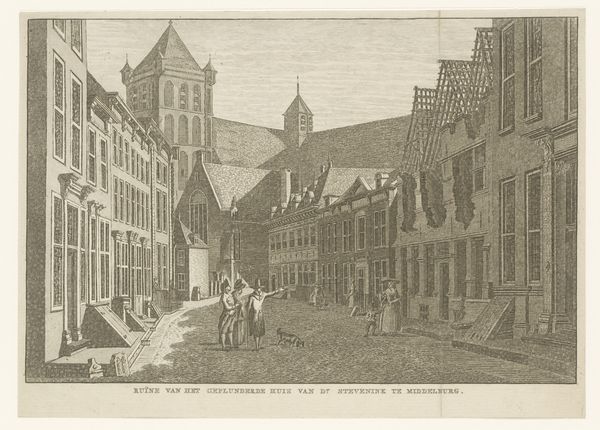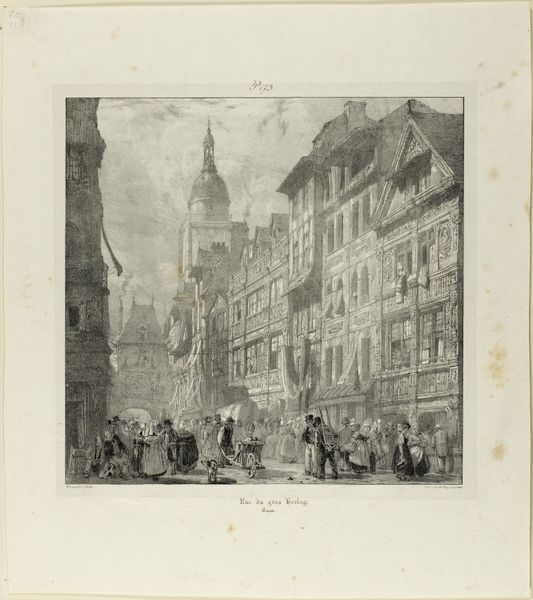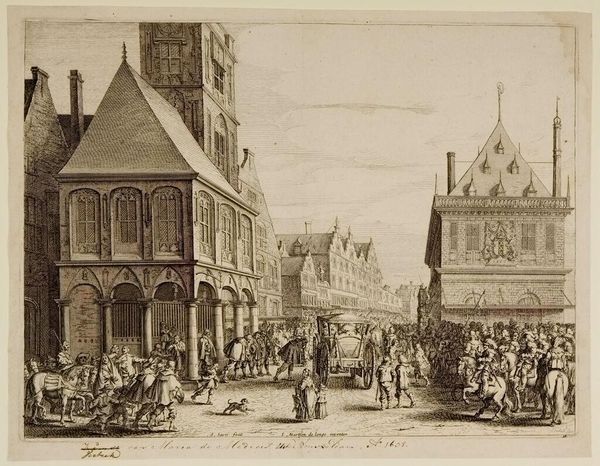
Het vertrek van de koningin Maria de Médicis uit Amsterdam, 1638 1868
0:00
0:00
janfrederikchristiaanreckleben
Rijksmuseum
print, engraving
#
dutch-golden-age
# print
#
old engraving style
#
cityscape
#
history-painting
#
engraving
#
realism
Dimensions: height 220 mm, width 297 mm
Copyright: Rijks Museum: Open Domain
Curator: Ah, this print—"The Departure of Queen Maria de' Medici from Amsterdam, 1638." It’s an engraving by Jan Frederik Christiaan Reckleben, made in 1868, though it depicts a much earlier historical event. Editor: My first impression is that it captures such a grand spectacle with delicate precision, a gray symphony etched onto paper. I am curious how the engraver dealt with translating this historical painting into a reproduction. Curator: Indeed! Look closely, and you can trace the engraver's labor and tools; imagine the careful scoring of the metal plate. This becomes a kind of mass reproduction, making a royal spectacle available, in a sense, to all who could purchase a copy. What was once an exclusive event for the burghers becomes accessible—albeit in a reduced form. Editor: Exactly, it makes you consider the role of reproductive media! Here, this event celebrating nobility is recreated for the enjoyment of the common folk through readily available means. In terms of composition, what I'm drawn to is the depiction of the built environment - those imposing gabled houses. It tells of civic pride but also of social order reflected in urban design. How might Reckleben’s vision enhance or alter perceptions of the depicted moment? Curator: A fabulous point. It's easy to get lost in the pomp, but these structures emphasize Amsterdam's standing and also its economic strength. They act as a background. These visual features show more than regal splendor; they offer glimpses into Dutch life at the time. Reckleben captured the liveliness—the people, architecture and activity make this picture timeless even though it speaks of one isolated moment. Editor: To see how technique allows for this historical "record," however romanticized, to trickle into people's daily lives raises questions of what, when, and whom we consume. And moreover, the subtle realism, the dedication to the materiality of urban life - those are crucial things to consider when appreciating the history embodied here. I believe Reckleben's artistic endeavor reveals more than just one grand display; It allows everyone to appreciate historical happenings while emphasizing everyday existence and the instruments by which art has changed over time! Curator: Agreed. And for me, this journey from historical event to painting, and ultimately to engraving, showcases how artistic reproduction democratizes art. It helps keep tales, moments and sensations in people’s memory across epochs, altering its effect as well—and that's, after all, something to celebrate.
Comments
No comments
Be the first to comment and join the conversation on the ultimate creative platform.
